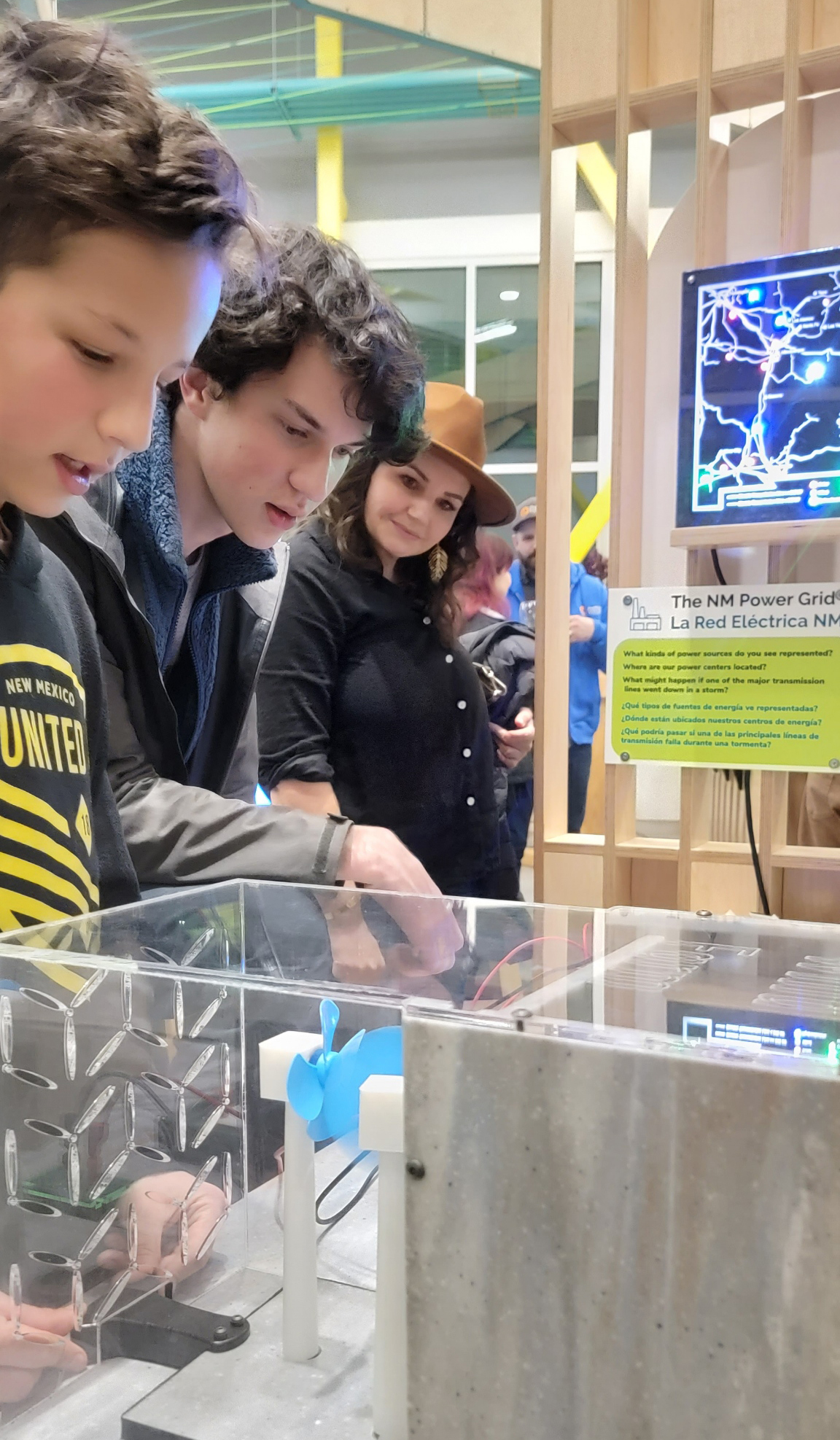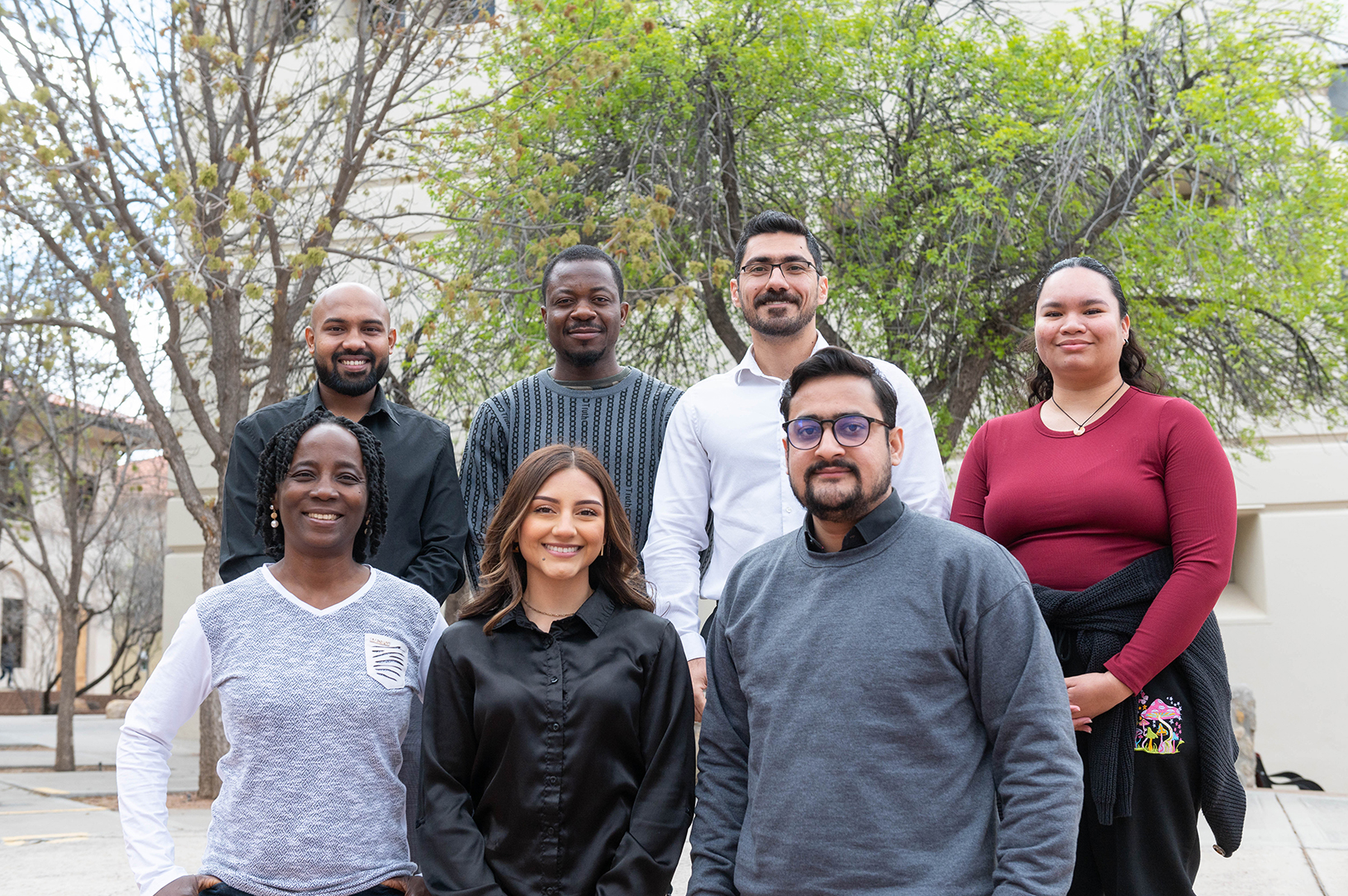NEWS
NM SMART Grid Center Year 5 Highlights
4 minutes
By
Brittney Van Der Werff
Every year the NM SMART Grid Center submits three project highlights to the National Science Foundation. This year's highlights showcase the grand opening of Explora's XStudio, electricity theft detection research by NMT, and seed award work by Dr. Jamal Mamkhezri at NMSU. Read our short (250 words or less) summary of each...
INSPIRING A SMARTER FUTURE
Amon Haruta, Explora
What is the outcome or accomplishment?
Explora Science Center and Children’s Museum in Albuquerque opened X Studio, an 8,000 square-foot teen center featuring an exhibit co-developed with the NM SMART Grid Center, at a VIP reception event on February 10th and a public grand opening the following day.
What is the impact?
X Studio will support more than 15,000 students each year and is geared towards getting young people interested in STEAM careers. The facility features an exhibit space to explore and learn, a cutting-edge makerspace, a state-of-the-art computer lab, multipurpose classrooms, and inclusive gathering spaces where teens can work on homework, consider solutions to big problems, or think about their future.
What explanation/background does the lay reader need to understand the significance of this outcome?
Almost 10 years in the making, X Studio is the result of more than 25 community listening sessions with teens, STEAM employers, and educators, as well as one-on-one conversations with over a dozen teen advisors. The facility is part of a larger effort by Explora and the City of Albuquerque emphasizing a cradle-through-career social support infrastructure intended to cultivate New Mexico's future STEAM workforce for youth in our community, particularly low-income teens and teens of color. The NM SMART Grid Center exhibit was co-developed by project faculty from around the state, education experts, and the Explora exhibits team, and focuses on energy generation and distribution, while showcasing grid resilience careers for teens to consider as they continue on to college or trades school.
WORKING SMARTER NOT HARDER: CATCHING ELECTRICITY THIEVES WITH SMART METER DATA
Ruobin Qi, New Mexico Institute of Mining and Technology
What is the outcome or accomplishment?
Researchers at New Mexico Institute of Mining and Technology have devised a novel unsupervised data-driven method for electricity theft detection using smart meter data from both residential and business users.
What is the impact?
Electricity theft can overload electrical lines, damage home electronics, raise rates for legitimate customers, and undermine the overall stability of power grids. This model provides utilities with a tool to flag malicious theft behaviors and thereby combat an estimated $96 billion in annual losses attributed to electricity theft.
What explanation/background does the lay reader need to understand the significance of this outcome?
Advanced metering infrastructure is an essential component of grid modernization which utilizes a large number of smart meters to collect high frequency energy usage data from customers to provide data-driven energy delivery and management services. However, it also brings security vulnerabilities which can be exploited by electricity thieves to steal energy via data tampering and cyberattacks. The resulting financial losses to utilities can be devastating and lead to higher costs for legitimate consumers and reduced funding availability for grid transition projects. Lead author PhD student Ruobin Qi, published the research detailing this advanced electricity theft detection method in IEEE Transactions on Instrumentation and Measurement, sharing authorship with PhD students Zhirui Luo and Qingqing Li as well as Computer Science and Engineering Professor Jun Zheng, whom all three PhD students nominated for the 2022 NM EPSCoR Outstanding Mentor Award.
IN OUR BEST INTEREST: INVESTING IN NEW MEXICO'S HUMAN INFRASTRUCTURE
Dr. Jamal Mamkhezri, New Mexico State University
What is the outcome or accomplishment?
Participants from early NSF EPSCoR projects in New Mexico continue to enhance research capacity in the state, years after their initial involvement has ended.
What is the impact?
These long-term outcomes provide tangible evidence for local, regional, and national agencies to consider when constructing funding mechanisms to build capacity.
What explanation/background does the lay reader need to understand the significance of this outcome?
Since its inception in 2000, NM EPSCoR has supported the hire of 32 new faculty at five different universities, 72% of whom remain in academic positions in New Mexico. Long-term impacts are also demonstrated in previously-supported students, like Jamal Mamkhezri, a University of New Mexico graduate student in 2015, now an Assistant Professor in the Department of Economics, Applied Statistics, and International Business at New Mexico State University. Dr. Mamkhezri has maintained ties with the NM EPSCoR community and, in 2021, he received a $50,000 NM EPSCoR Seed Award for his project, Assessing the Economic and Environmental Impacts of Alternative Electric Vehicle Policy Scenarios in New Mexico, which supported three students from minority populations; two of whom identify as female. All three recently graduated and plan to pursue careers in energy economics.